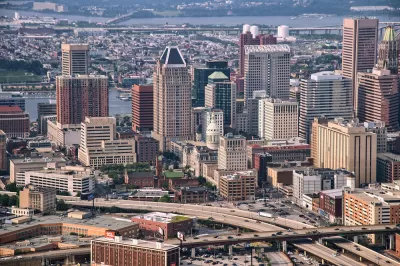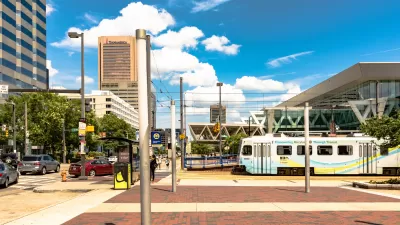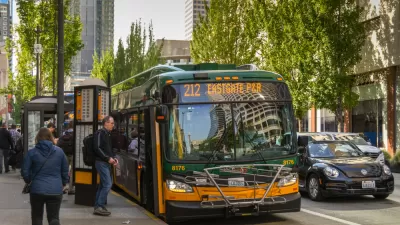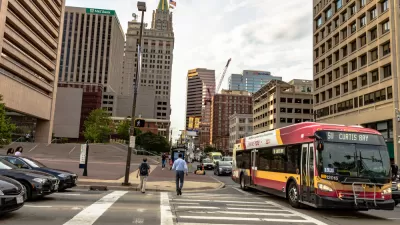The region’s long-range transportation plan fails to boost investment in transit, opting to fund road expansions instead.

In a commentary published in The Baltimore Sun, Samuel Jordan, Eric Norton, and Michael Scepaniak excoriate Baltimore’s new regional transportation plan, known as Resilience 2050, which the authors argue “represents the same business-as-usual, automobile-centric approach Maryland has largely been taking for the past 70 years.”
According to the article, “the plan calls for almost $7 billion, the majority of system expansion spending, to go toward expanding roads and highways.” And while the plan includes almost $5 billion for new transit projects, “any progress on transit expansion would be swamped by the additional miles of new road lanes.”
As the authors point out, “History has proved that trying to build our way out of congestion with more lane miles is a failed strategy.” Now, “It’s time to plan for a transportation system that works for everyone and every community in our region — urban, suburban or rural. We need a system that gives us choices, grows the economy, is safe for everyone (including cyclists, pedestrians and people with disabilities), and helps us reduce carbon emissions.”
FULL STORY: Baltimore region’s new transportation blueprint: more of the same car-focused bad ideas

Planetizen Federal Action Tracker
A weekly monitor of how Trump’s orders and actions are impacting planners and planning in America.

Chicago’s Ghost Rails
Just beneath the surface of the modern city lie the remnants of its expansive early 20th-century streetcar system.

San Antonio and Austin are Fusing Into one Massive Megaregion
The region spanning the two central Texas cities is growing fast, posing challenges for local infrastructure and water supplies.

Since Zion's Shuttles Went Electric “The Smog is Gone”
Visitors to Zion National Park can enjoy the canyon via the nation’s first fully electric park shuttle system.

Trump Distributing DOT Safety Funds at 1/10 Rate of Biden
Funds for Safe Streets and other transportation safety and equity programs are being held up by administrative reviews and conflicts with the Trump administration’s priorities.

German Cities Subsidize Taxis for Women Amid Wave of Violence
Free or low-cost taxi rides can help women navigate cities more safely, but critics say the programs don't address the root causes of violence against women.
Urban Design for Planners 1: Software Tools
This six-course series explores essential urban design concepts using open source software and equips planners with the tools they need to participate fully in the urban design process.
Planning for Universal Design
Learn the tools for implementing Universal Design in planning regulations.
planning NEXT
Appalachian Highlands Housing Partners
Mpact (founded as Rail~Volution)
City of Camden Redevelopment Agency
City of Astoria
City of Portland
City of Laramie





























